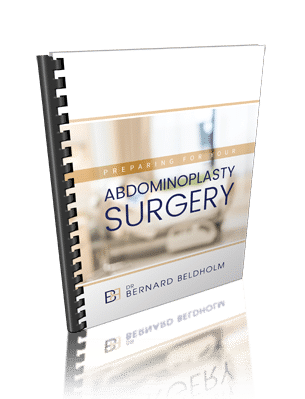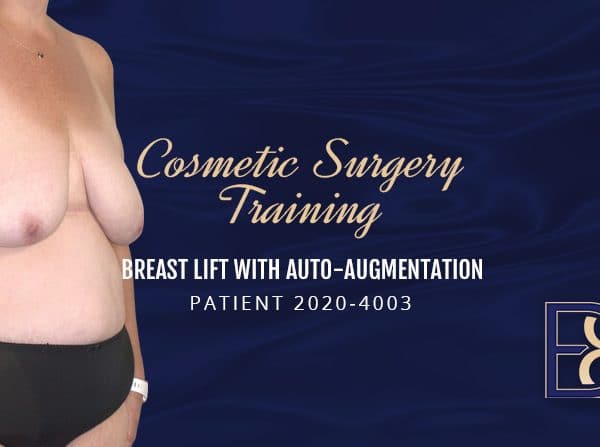How to Tell if Your Abdominal Muscles Were Torn During Pregnancy
Pregnancy is like a physical endurance challenge that lasts for nine months. As with any strenuous activity, it will leave its stamp on your body. Despite what media coverage of celeb moms would like you to believe, getting your pre-baby body back after pregnancy is no easy matter. Carrying a growing baby inside your womb for nine whole months changes your body.
The effects of these changes can persist for months, or even years, after you have given birth.

Diastasis recti (Muscle separation)
One of the most common and longest-lasting complications accompanying pregnancy is torn abdominal muscles- or diastasis recti. In fact, up to two-thirds of all pregnancies result in cases of diastasis recti. This condition can make returning to your old physique after pregnancy extremely difficult, if not impossible.
But there certainly are ways of preventing this. Staying fit and maintaining a strong core have been linked to preventing torn abdominal muscles in pregnant women.

How to Tell if Your Abdominal Muscles Were Torn During Pregnancy
Medically DRAM (Diastasis of the rectus abdominis abdominal muscle separation) is defined as an inter-rectus distance (IRD) of 22 mm, three centimetres above the umbilicus measured in a relaxed state. To find out if you have muscle separation lie on your back with knees bent and feel with your fingers for a gap. A finger-width or wider gap indicates abdominal separation.
What Happens to Your Abdominal Muscles During Pregnancy
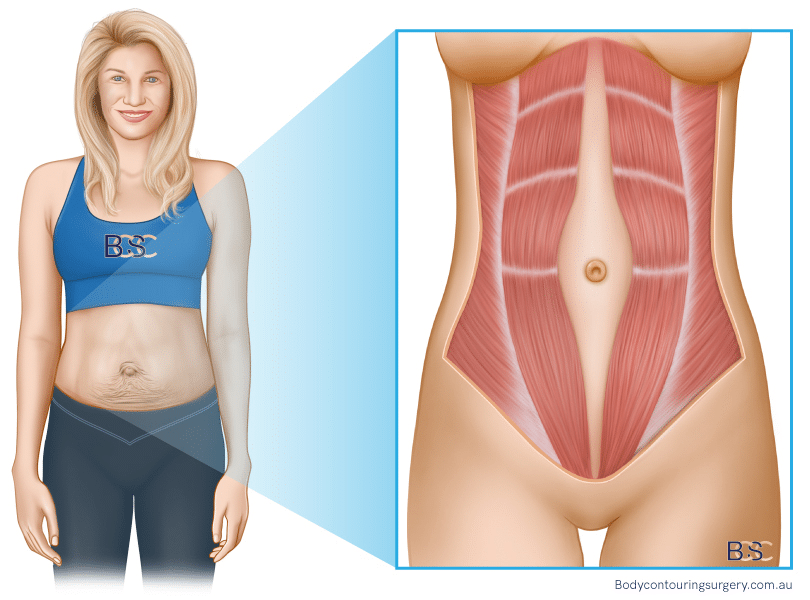
Abdominal muscle separation
To understand how pregnant women can tear their abdominal muscles, we need to learn precisely how diastasis recti works. It affects the rectus abdominis muscles, the two long muscles that run vertically down the front of your stomach. The non-medical term for the rectus abdominis is “six-pack abs.”
In normal cases, the rectus abdominis lie next to each other, separated muscles joined by connective tissue known as the linea alba. A woman’s belly swells to accommodate her growing baby when pregnant. This pushes apart the muscles in the front of the abdomen and stretches out the connecting linea alba.
After giving birth, in the mother’s fourth trimester, the swollen belly reduces, and the muscles gradually come back together.
What is Abdominal Separation?
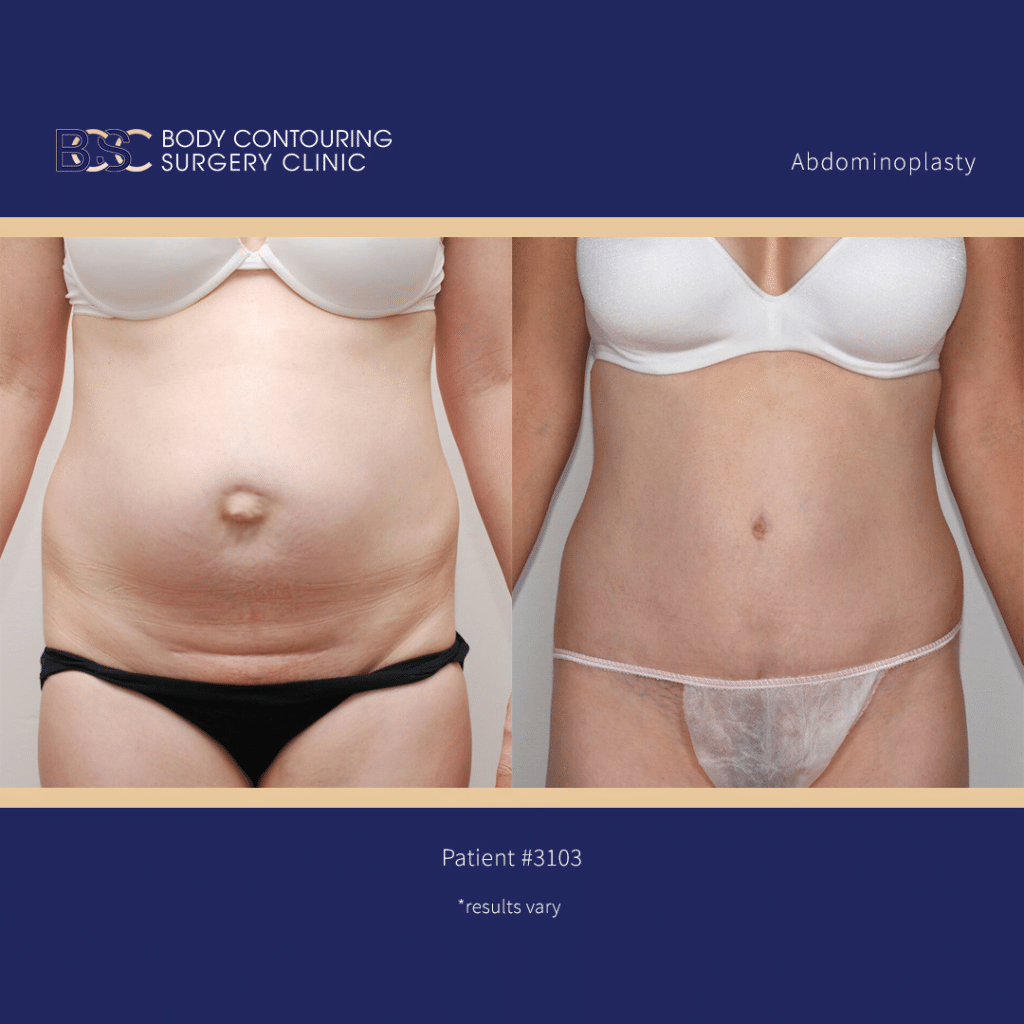
Patient with abdominal muscle separation repaired with Abdominoplasty
Disclaimer: Operation performed by Dr Bernard Beldholm. Adult content, surgery has risks, individual results vary, seek 2nd opinion. Please see the full disclaimer.
In many instances, a woman’s rectus abdominis muscles do not return to their original position even after months have passed since giving birth. This is what is known as abdominal separation.
When a woman’s abdominal muscles have torn during pregnancy, it leads to the appearance of a bulge or depression along the middle of the stomach. Diastasis recti can lead to you looking pregnant long after you’ve had your baby. Every pregnancy carries the risk of torn abdominal muscles, and there is no foolproof way to prevent diastasis recti. However, keeping fit before pregnancy, maintaining a strong core, and staying away from unhealthy activities like smoking can reduce the chances of your abdominal muscles tearing during pregnancy.
On the other hand, some conditions indicate an increased likelihood of abdominal separation during pregnancy. These are:
- Having multiple pregnancies close together
- Being 35 years or older
- Delivering a high birth-weight infant
- Carrying multiple babies (twins, triplets, etc.)
- Being slightly built
- Over-exerting the abdominal muscles
- Vaginal birth
Diastasis recti is very common among pregnant women, but not exclusive to them. Men and even newborn babies can also be diagnosed with this condition.
Symptoms of Diastasis Recti
Even though tearing or separating abdominal muscles sounds very painful, diastasis recti is not known to be agonising. There may be some discomfort, but there is no crippling pain. The muscles usually start to separate during the third trimester, when the belly is most swollen. Still, most people become aware of the separation only after giving birth, as the stomach is no longer stretched out.
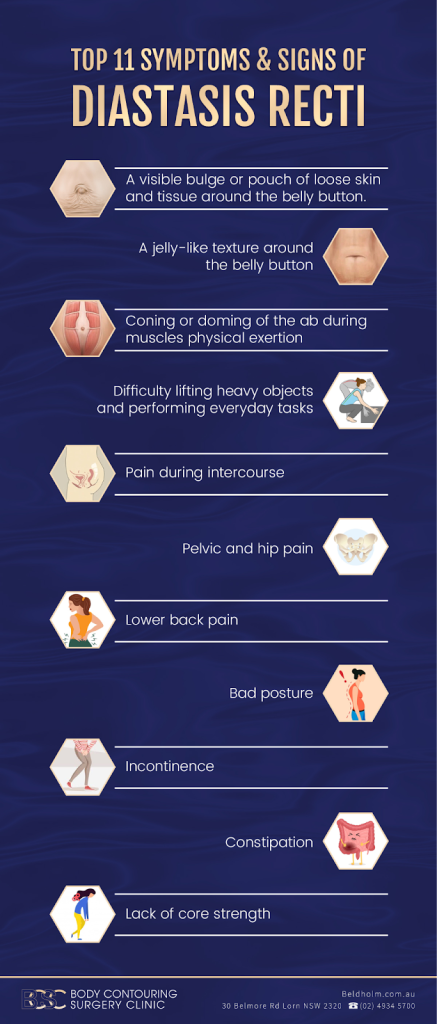
Symptoms of Diastasis Recti (abdominal muscle separation)
The most common symptoms & signs of diastasis recti are:
- A visible bulge or pouch of loose skin and tissue around the belly button
- A jelly-like texture around the belly button
- Coning or doming of the ab muscles during physical exertion
- Difficulty lifting heavy objects and performing everyday tasks
- Pain during intercourse
- Pelvic and hip pain
- Lower back pain
- Bad posture
- Incontinence
- Constipation
- Lack of core strength
If these symptoms persist for months after giving birth, they are a sign that you may have torn your abdominal muscles apart during the pregnancy. But there’s no cause for alarm! Diastasis recti is treatable through both surgical and non-surgical methods.
How to Check For Torn Abdominal Muscles at Home
If you are experiencing symptoms of abdominal separation, you can perform a ** test from the ** of your home to confirm your condition.

Checking for muscle separation
- Step 1: Lie on your back, with your knees bent and feet resting on the floor
- Step 2: Place one hand under your head for support, and place the other across your midsection
- Step 3: Raise your shoulders off the ground like you are doing a crunch; at the same time tighten and contract your pelvic floor
- Step 4: Use the hand on your midsection to feel for a gap between your abdominal muscles
- Step 5: If there is a gap along the line of your belly button that is more than one finger in width, you are experiencing abdominal separation
Pregnant women should regularly perform this self-assessment test in the weeks after giving birth. It allows them to check whether their body is healing naturally postpartum or needs an intervention to recover.
Stomach muscles explained
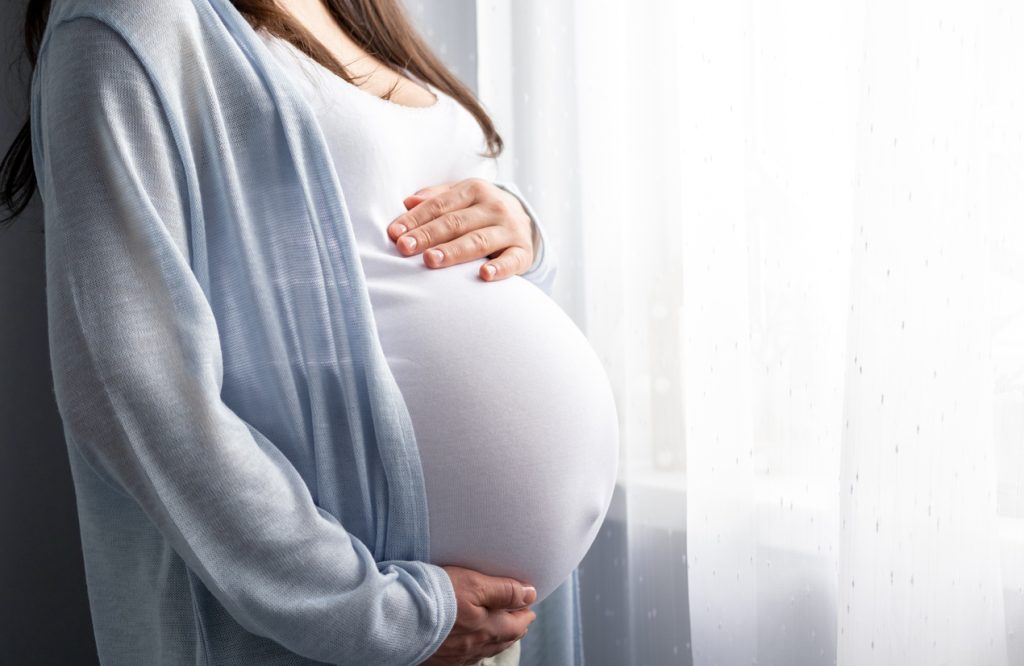
Pregnant woman
Abdominal separation is a common complication in new mothers. It’s a natural, if undesirable, outcome of all the drastic changes pregnancy brings about in a woman’s body. In some cases where a mother is carrying a heavy baby or multiple babies, it is near inevitable that there will be some abdominal separation.
With that said, torn or separated abdominal muscles can be prevented — and if they separate, the separation can be kept minimal — by maintaining a strong core before pregnancy. Strong abdominal muscles are in fact beneficial throughout the pregnancy, as they can support your pelvic floor, reducing the need to urinate frequently, and support your back and spine in bearing the weight of the growing baby. Having strong abdominal muscles also assists women in pushing during labour.
The four main muscle groups in the abdomen are:
Transversus abdominis

Transversus abdominis muscle
Transversus abdominis: The deepest layer of core muscles, which help in stabilising your entire trunk and maintaining internal abdominal pressure
Rectus abdominis

Rectus abdominis muscle
Rectus abdominis: The muscles on the front of your abdomen, which form the sought-after “six pack abs” — these are the muscles that are at risk of tearing or separating during pregnancy
External oblique muscles
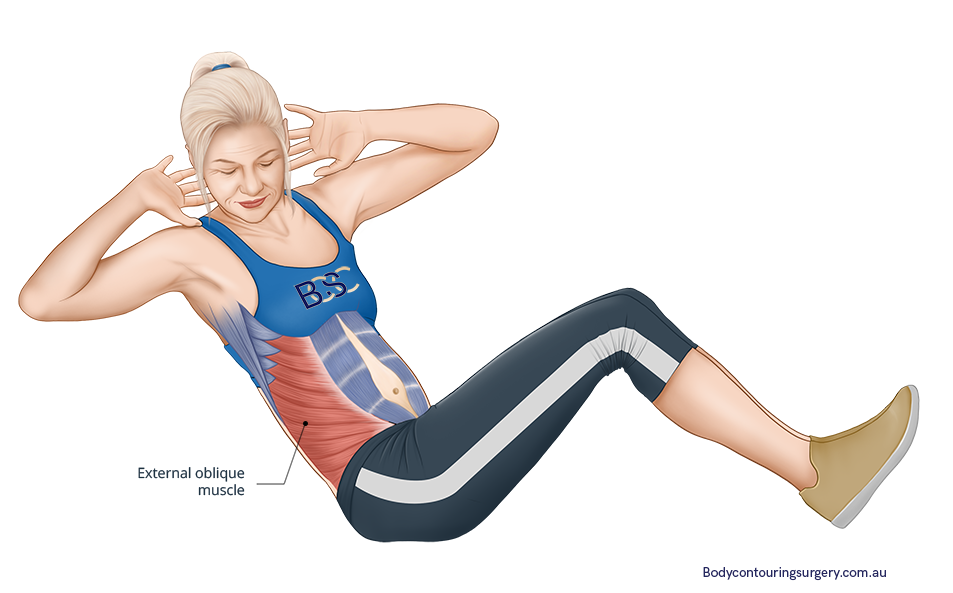
External oblique muscle
External oblique muscles: Located on each side of the rectus abdominis, the muscles help twist your torso left and right
Internal oblique muscles

Internal oblique muscle
Internal oblique muscles: These muscles are located beneath the hipbones and work in concert with the external oblique muscles to help with twisting motions
Preventing Abdominal Separation During Pregnancy
Once a woman gets pregnant, she has to change her approach to exercise. Vigorous exercise is no longer an option when carrying a baby, especially in the second and third trimesters. However, unhealthy weight gain during pregnancy can lead to diastasis recti. So maintaining a low-to-moderate level of activity even while pregnant is recommended. The exception to this would be expecting mothers who have a pre-existing health condition that prevents them from exercising.
To reduce the chance of torn abs during pregnancy, seek a physiotherapist who specialises in women’s health. They can recommend an exercise programme that is ** for pregnant women. Most doctors will agree that mild aerobic and strengthening exercises benefit pregnant women. Yoga, pilates, and other forms of exercise that strengthen your pelvic floor and core will help prevent abdominal separation after pregnancy.
Apart from exercise, pregnant women can also reduce their chances of suffering from diastasis recti by following these tips:
- Not lifting heavy objects
- Practising good posture to reduce the strain on your abdominal muscles
- Avoiding exercises that cause your core to bulge outward, like crunches or planks
- Using the “log roll” technique of getting out of bed by rolling onto one side and pushing with your arms
Remember, you can follow every single one of these tips, but still end up experiencing torn abs during your pregnancy. It’s a completely natural phenomenon and a normal way for your body to react to the strain. It’s also completely treatable. In fact, in cases where the abdominal separation is slight, the muscles can even bounce back on their own a few months after birth.
How to Repair Torn Abdominal Muscles
Diastasis recti is a very treatable condition. Depending on the severity of the case, it can even be ** through non-surgical methods. In extreme cases, surgical intervention may be required. Diastasis recti is corrected by a surgical procedure known as abdominoplasty, commonly called the “tummy and tuck surgery.” Treating abdominal separation involves bringing the muscles together, strengthening the linea alba, and ** strength through your core.
Non-surgical Methods
When the gap between the rectus abdominis muscles is small (around two to four centimetres), non-surgical methods of treatment are often effective. Diastasis recti can be treated through a specially designed physiotherapy plan. However, consulting with an expert is vital since some exercises should not be performed when you have torn abdominal muscles. Crunches, lifting heavy weights, and planks are some exercises that can worsen your separation. Always consult with a qualified physiotherapist before starting a post-pregnancy workout programme.
Surgical Methods
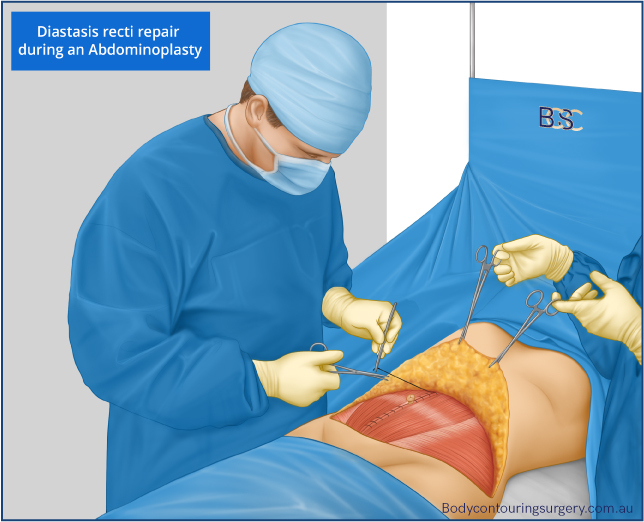
Repair of diastasis recti during an abdominoplasty
In more extreme cases of abdominal separation, surgical intervention may be required. Plastic surgeons & Specialist General surgeons perform abdominoplasties for patients suffering from diastasis recti. The surgeon sews the connective tissue and brings the rectus abdominis back into position. When paired with liposuction, this procedure can completely change the contours of your stomach after pregnancy. If you are considering an abdominoplasty after having a baby, it’s best to wait for at least a year after giving birth. This allows your body time to heal naturally before the surgeon steps in.
Torn abdominal muscles can have an adverse impact on your quality of life. Health complications and discomfort are a constant accompaniment to diastasis recti. If you are suffering, do not let your abdominal separation go untreated. Consult your general practitioner to learn which abdominal separation treatment is best for you.
Frequently Asked Questions
Can Torn Abs During Pregnancy Be Treated?
Yes. Diastasis recti is very common after pregnancy, but it is also completely treatable. Surgical methods of treating diastasis recti surgery or abdominal separation are tummy tuck surgeries or abdominoplasties. Non-surgical methods involve physiotherapy programmes to ** strength to the abdominal wall.
You can treat torn abdominal muscles anytime, including years after giving birth.
What Causes Torn Abs During Pregnancy?
Several factors can indicate a higher likelihood of experiencing torn abs during pregnancy. These are:
- Carrying twins (or higher multiples) or a heavy birth-weight baby
- Poor posture
- Advanced age
- Back-to-back pregnancies
What Exercises Should Be Avoided After Experiencing Abdominal Separation?
Pregnant women look forward to exercising and returning to their pre-baby bodies. But there are some exercises that put a strain on the rectus abominis and can cause the condition to worsen.
Some of the riskiest abdominal exercises used for women whose abs have torn during pregnancy are:
- Lifting heavy weights
- Crunches / Sit-ups
- Planks
This is not an exhaustive list; women who have suffered diastasis recti should consult a physiotherapist for a ** exercise programme.
